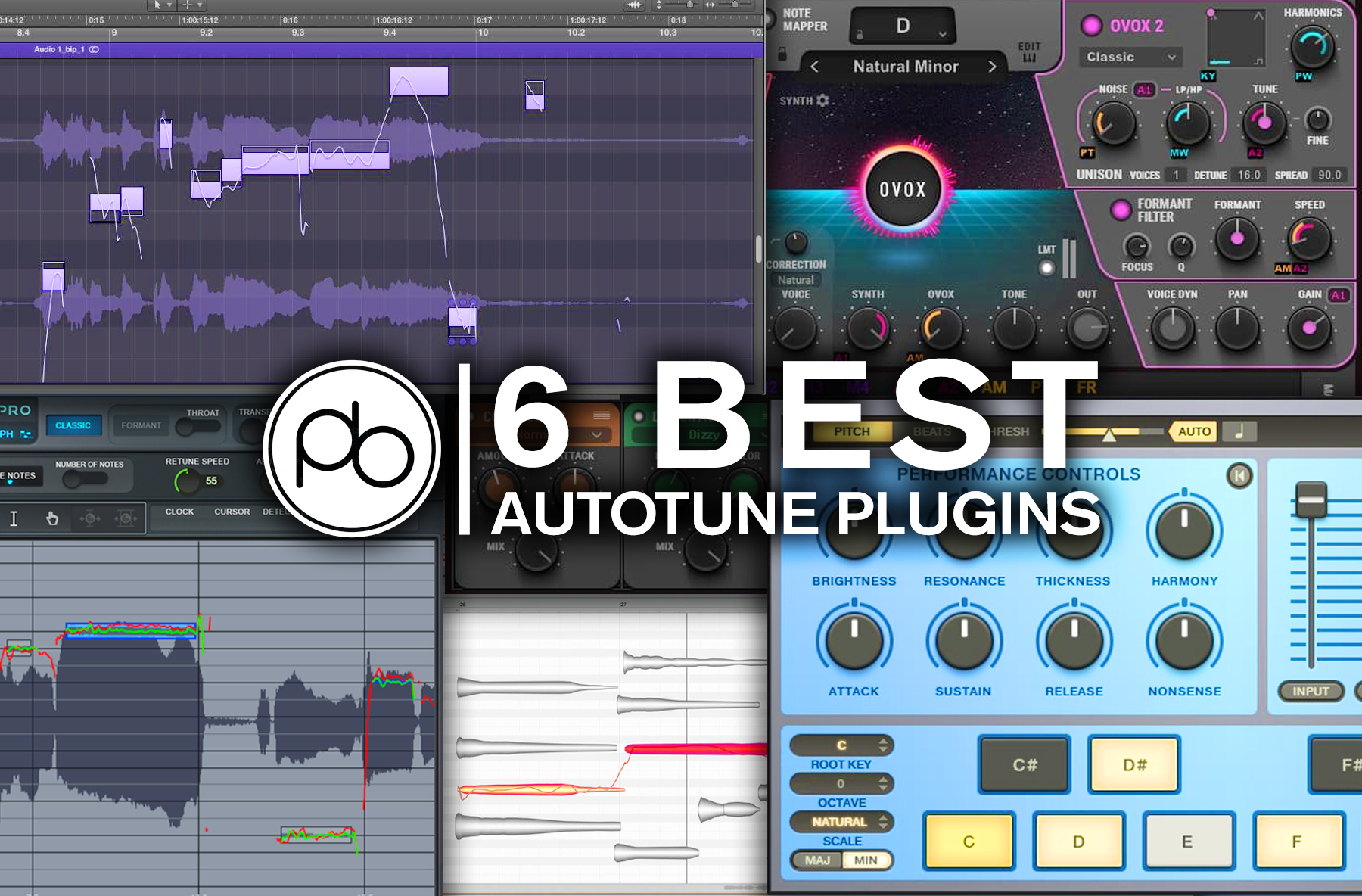Aug 29, 2020 Pro Tips: How to Effectively Use Free Autotune Software Plugins. Here I have given 5 step process to effectively use any Autotune plugin on vocal tracks. Whether it’s a free version or paid one, the process is similar. Let’s have a look on the process, First of all apply the auto tune plugin to vocal track and get families with the interface. See full list on hiphopmakers.com.
Whether you’re a home producer or work at a major recording studio, Autotune and other pitch correction software can help deal with a weak vocal performance.
Auto-Tune Evo VST, free download. Pitch correction software for Windows: Excellent software for pitch correction in audio files. Review of Auto Tune Evo VST. Includes tests and PC download for Windows 32 and 64-bit systems. What is the best autotune for vocals in 2019? There are four new Antares Auto-Tunes available in 2019 called Auto-tune Access, EFX+, Artist, and Pro. Though Auto-Tune Evo isn’t a contemporary version of the software, the refinements made to the plugin over the years have been incremental. This is a VST package that hit it out of the park early in its existence and since then there haven’t been quantum leaps, save perhaps for the Melodyne interface which perhaps makes forensic touch-ups. ReaEQ equalizer VST plugin is one of the best free plugins for music producers. Its a graphic equalizer plugin with lots of features that you generally get with a paid VST plugin. Here are some features of ReaEQ This IR based equalizer has Unlimited bands.
In a hurry? I love Melodyne 4 Studio from Celemony. It’s sounds incredible, leaving little to no artifacts on vocals recorded in a treated space, but are in need of a little fixing.
But Autotune isn’t reserved exclusively for pitch correction. T-Pain popularized the hard-straightened pitch, even going as far as releasing an iOS app called “I Am T-Pain.”
Pitch correction software can also be utilized for other instruments as well. I’ve even used VariAudio (the “Autotune” built into Cubase) on bass guitar parts that were slightly out of tune. The result was surprisingly excellent, with little to no audio artifacts.
There’s a lot you can do with Autotune and similar software.
With so many options for producers, how can you decide on which one to use? Fortunately, I’ve had the experience working with many pitch correction plugins to weed out the good from the bad.
I’m going to include both free and paid options, so please read on!
Have an interest in virtual instruments? Don’t miss my other roundups!
Table of Contents
Autotune Vst
1) Antares Auto-Tune Pro (Paid)
Auto-Tune is the original pitch correction software. It’s so popular that its name is synonymous and is more of a colloquial term.
Antares gives you a couple of options to pick from depending on your needs — Pro, Artist, Access, or EFX+. As you’d guess, the price moves up the more features there are.
Auto-Tune is very hands-off. I’d even go as far as to say that it’s the most straightforward plugin for correcting pitch.
Pros
- Easy to use for beginners
- Lightweight on memory
- Great-looking user interface


Cons
- AUTO mode is limited
- Difficult for beginners to use GRAPH
- A little outdated compared
When using Auto-Tune on a vocal track in AUTO mode, set the key, the retune speed, and the amount of humanization. You should be able to hit the playback button now and hear hopefully great results.
Because it’s simplicity, I find that it doesn’t perform as well as others (when using the quick settings) that require more fine-tune vocal editing.
To fix an abysmal vocal performance, use the graph mode and hand tune each note to your liking. This process is much more complicated but yields a far better result.
I am not huge on Auto-Tune (I know many are), but it can deliver exceptional results. If you take the time to learn how to use it properly, you’ll have great-sounding vocals with ease.
Auto-Tune from Antares is available at Plugin Boutique.
2) Steinberg VariAudio — Cubase Pro (Paid)
Steinberg’s VariAudio is a pitch correction software included in Cubase Pro. It’s not a standalone plugin, so you won’t be able to use it if you don’t own Cubase Pro.
But, for those of you with Cubase who didn’t realize your DAW has pitch correction, rejoice!
I love VariAudio — so much so that I couldn’t imagine switching DAWs. I’ve been on Cubase for ten years, so I know my way around, but VariAudio is the one thing that will keep me as a forever customer.
Pros
Best Free Autotune For Fl Studio 20 Download Full Vst
- Integrated into Cubase
- Quick to edit any clip
- Very fast and no CPU
Cons
- Audio artifacts are very noticeable if not careful
- Limited cutting resolution
- Not intuitive at first
VariAudio functions similar to Melodyne and Auto-Tune’s graph mode. Double-clicking on a clip opens up the editor, where you can choose to enable VariAudio — no plugin required.
From here, it’s simple as using Pitch Quantize and Straighten Pitch on each clip. Cutting clips also helps pitch only individual sections of a waveform.
The newest version of VariAudio introduced some incredible options for adjusting pitch that make the software even more valuable.
I highly recommend considering Cubase Pro if you plan to switch DAWs — for VariAudio exclusively!
Steinberg’s Cubase Pro is available from Plugin Fox.
3) Celemony Melodyne (Paid)
We’re moving up the price ladder, but for a good reason. Melodyne from Celemony is one of the most utilized pitch correction plugins used by professional vocal editors and producers.
Melodyne offers (to my ears) the most accurate and musical sounding algorithm, leaving no tuning artifacts that are easily recognizable to the untrained ear.
Pros
- Incredible-sounding algorithm
- Tons of flexibility when vocals sound poor
- Zero audio artifacts in most cases
Cons
- Difficult for new users
- Rather expensive
The software has incredible note detection allowing for more accurate tuning. I find that in VariAudio, there are times that the software cannot understand individual notes, so they are omitted. It’s not too often this occurs, but Melodyne does it better.
Melodyne is available at Plugin Boutique.
4) Waves Tune (Paid)
Waves Tune operates similarly to Auto-Tune and Melodyne. Before you begin tuning, the software scans the audio track and displays audio waveforms.
The process of editing is quite similar as well, though the interface is slightly dated.
Pros
- Included in many of Wave’s plugin bundles
- Relatively lightweight on CPU
Cons
- Outdated
- Difficult to use
I have never enjoyed using Waves Tune but figured it needed a mention since Waves is one of the most popular audio plugin companies.
5) Waves Tune Real-Time (Paid)
While cheaper than the regular version of Tune, Tune Real-Time offers a quick and user-friendly experience for tuning vocals. I’d compare this plugin to using Auto-Tune on AUTO mode.
Note transition is iffy at best and artifacts are present throughout (at least when I used it). The plugin isn’t smooth sounding at all, and there aren’t many parameter changes available.
I’d recommend Real-Time for two different scenarios. The first being someone new to audio production looking to fix a vocal without technical knowledge of tuning vocals. You won’t get the most professional sound, but it will be acceptable.
The second scenario is for producers working with singers in the studio who struggle to sing on pitch.
Using a pitch-correction software can boost the confidence of the singer in the booth, though I can’t say for sure if this will lead to a better sounding vocal take.
Despite the marketing of Waves Tune Real-Time, claiming instant vocal tuning, I could envision latency becoming an issue in some home studio settings.
Free Auto-Tune VST Plugins
If you’re on the fence about which one to get or want to save a little cash, try some of these free pitch correction plugins I’ve listed below.
Things To Consider When Choosing a Pitch Correction Software Plugin
Despite all the choices I’ve laid out, you still may be confused on the correct option. Here are some things to consider before making a decision.
Does the software maker provide a trial?
If so, take the trial and check out the software! There’s nothing more frustrating than buying a plugin only to find out that it’s non-refundable.
Do you need graph editing functionality?
Graph editing, like seen in Melodyne and VariAudio, is for advanced vocal editors. If you need a quick tuning for a little enhancement of a track, you may not need to edit each note.
If you want to draw in the notes physically, a more advanced pitch correction software will be necessary.
Further features you may desire are formant control, MIDI input (for vocoder), and note straightness. These types of effects are often essential in a lot of today’s popular music.
Does your DAW already have pitch processing?
Mine does — that’s why I’ve included VariAudio in this list. Digital audio workstations like Propellerhead’s Reason and MOTU Digital Performer also come with their native pitch correction software.
Wrapping Up
Which one do I like most? If I didn’t have VariAudio included in Cubase, I’d most likely be using Melodyne exclusively. It sounds incredible, and the workflow is so intuitive.
So there you have it — my list of the best Auto-Tune/pitch correction VST plugins. Which one do you currently use in the studio? I’d love to hear from you down below in the comments. Thanks for reading!
Comments are closed.